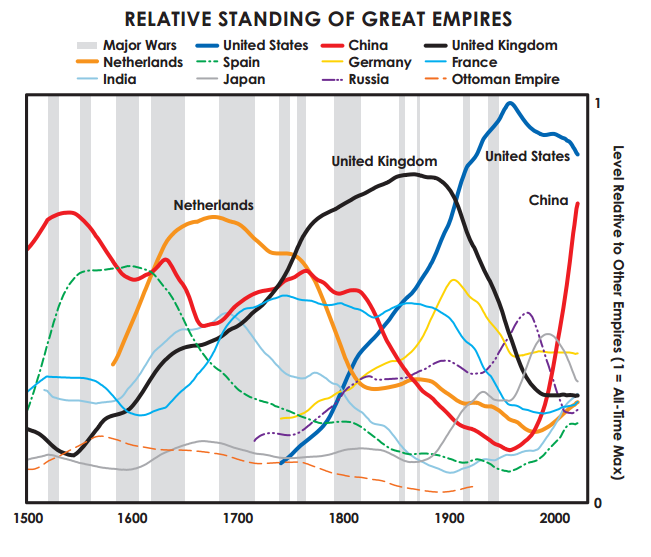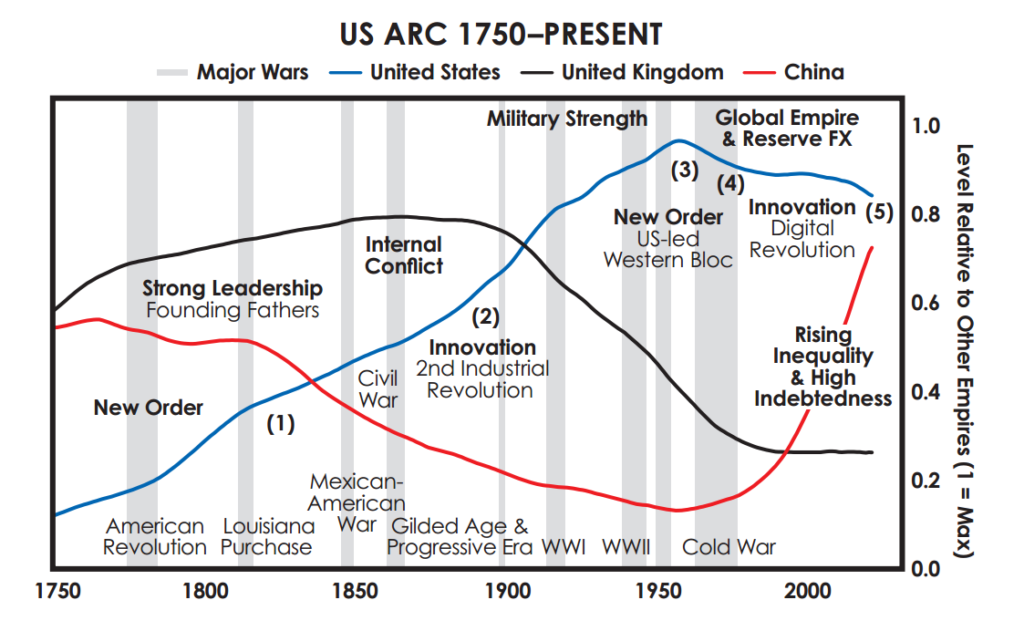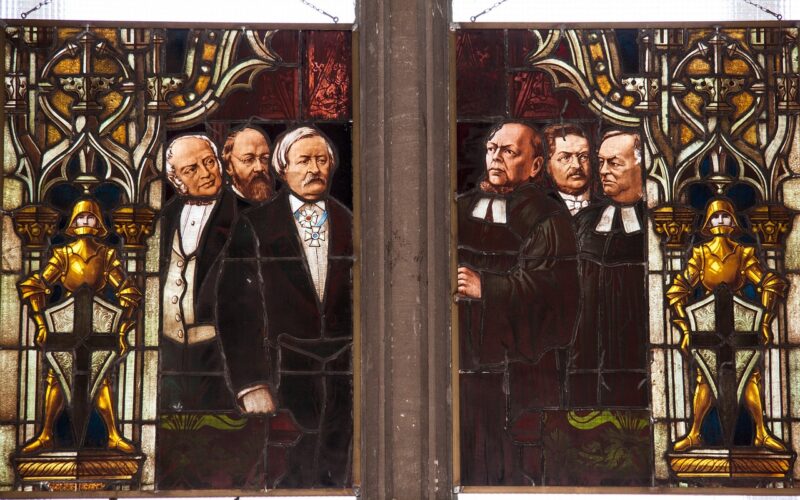History gifts us many lessons, but our direct life experiences, which span a mere seventy years or so, limits our capacity to learn them. Ray Dalio’s book The Changing World Order amply demonstrates what can be learnt by studying the last five hundred years and beyond. And those lessons provide guideposts for what we may see in the future if we care to look for them.
Ray Dalio is an investment manager whose motivation for this study came from his need to understand cycles that he personally had not experienced. It was through this study that he determined the ‘big’ cycles that invariably repeat through history.
Dalio presents the last five hundred years through the lens of ‘empires’. He identifies and describes the rise and fall of consecutive empires starting with the Dutch, then the British, to the current American primacy and finally to the emerging China.
He develops an index to measure the strength of an empire which is a function of wealth and power. The key components of his empire index are education, competitiveness, technology, economic output, share of world trade, military strength, financial center strength and reserve currency status,
Dalio shows that great empires typically last roughly 250 years give or take 150 years, with ‘big’ long-term debt/economic and political (internal and external) cycles within them lasting about fifty to one hundred years. The chart below from his book shows the rise and fall of the recent empires as measured by Dalio’s index.

The key takeaways of this chart are
- China was dominant for centuries before a steep decline starting in the 1800s
- The Netherlands became the world’s reserve currency in the 1600s
- The UK followed a similar path peaking in the Victorian era
- The USA rose to become the world’s superpower over the last one hundred years, and especially after World War II
- The USA is now in decline while China is rising again.
This empire cycle is typically governed by what Dalio calls the “Big Cycle of Internal Order and Disorder” which involves the following six stages:
- A new order begins and new leadership consolidates power, which leads to…
- Resource allocation systems and government bureaucracies being built and refined. If done well this leads to…
- Peace and prosperity, which leads to…
- Great excesses in spending and debt and widening of wealth and political gaps, which leads to…
- Bad financial conditions and intense conflict, which leads to…
- Upheaval, civil wars, revolutions which starts the cycle over.
Dalio provides numerous examples of this cycle in action. Perhaps it is best illustrated by the following chart for the USA which is the easiest to relate to. It shows the USA in a gradual decline.

As to the future, Dalio believes that humanity’s inventiveness is accelerating and that most people will benefit from it – if humanity doesn’t kill itself first. He believes that the US is in Stage 5 of the “cycle” and China is in Stage 3. He thinks the chances of the USA devolving into a Stage 6 dynamic within the next ten years are only around 30%, but this is still dangerously high. Similarly he thinks that the risk of a big war between USA and China is of the same order.
Dalio’s book is uniquely designed with various type of readers in mind. He highlights in bold the concise version of his argument, giving the reader a quick-read version, or they can read more elaborate explanations when the subject matter interests them. There are numerous charts to illustrate the points being made.
I have previously written about the Eight Lessons of History. Dalio’s book takes those lessons and repackages them into objective cycles that provide us some insights into the future.
The reviewer is a co-author of Court of the Grandchildren, a novel set in 2050s America.
Charts from The Changing World Order. Main image by stux from Pixabay
The title quote comes from Kurt Vonnegot’s satirical postmodern novel Cat’s Cradle.
